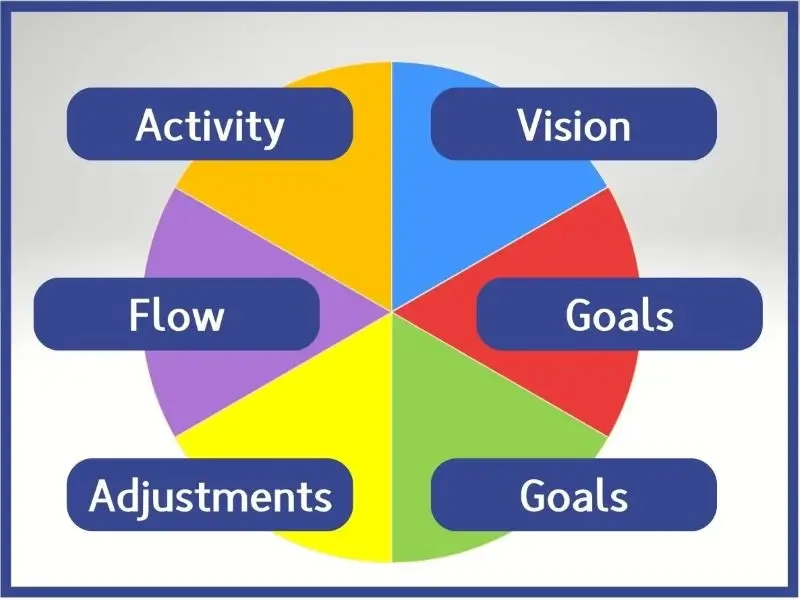
Perceptual Style™ and Leadership
Unlock Your Natural Leadership Potential
Leadership isn’t about titles or fame — it’s about action, influence, and authenticity. But here’s the catch: not all leaders succeed. Even those with obvious competence can struggle to lead effectively. Why? Often, it’s because they’re trying to emulate others instead of focusing on their own natural strengths.
The truth is, leadership success comes from understanding and leveraging what makes you unique. By identifying your natural leadership strengths and staying true to them, you can overcome challenges and inspire others effortlessly.
Whether you’re guiding a team, managing a project, or leading in your community, understanding your Perceptual Styleunlocks your potential to lead authentically and effectively.

Why Leadership Matters
Leadership is about organizing, guiding, and inspiring people to achieve a common goal. It's more than just moving tasks forward — it's about creating clarity, building momentum, and transforming potential into meaningful outcomes.
Leadership isn't about control or authority alone. When you lead with self-awareness and purpose, it becomes a path to:
-
Setting a clear vision – Define direction and inspire alignment, so everyone moves together with shared purpose.
-
Motivating and inspiring – Energize others to commit fully and bring their best selves forward.
-
Building trust and collaboration – Foster open communication and a strong sense of connection within your team.
-
Navigating challenges with resilience – Adapt under pressure and lead confidently through change.
-
Driving meaningful change – Turn vision into actionable steps that make a lasting impact.
Great leadership isn't one-size-fits-all — it's about knowing your natural strengths and using them with clarity and intention. When you understand how you’re wired to lead, you empower yourself to guide others with confidence, connection, and purpose.
The Perceptual Style Difference
Created by Dr. Gary Jordan PhD.and Lynda-Ross Vega,the Perceptual Style Theory™ reveals that each of us has a unique way of perceiving the world. This natural perspective — your Perceptual Style— shapes how you approach challenges, opportunities, and leadership.
There are six distinct Perceptual Styles,each with its own strengths and leadership approaches. Knowing your Perceptual Stylehelps you:
Lead with authenticity by leveraging what you do best.
Navigate leadership challenges with confidence.
Understand and leverage the strengths of others.
Your Perceptual Styleis more than a leadership tool — it’s a lens that shapes your communication, decision-making, and problem-solving. By embracing your style, you unlock the potential to lead authentically and effectively.

Explore the six Perceptual Styles and Leadership
Each Perceptual Stylehas a unique approach to leadership. Click below to explore the one that resonates most with you:
Not Sure Which Style Sounds Like You?
You don’t need to guess — the Perceptual Style Assessment makes it easy to discover your natural leadership strengths. In just a few minutes, you’ll:
-
Discover your Perceptual Style.
-
Receive a 45-page Celebrate You!action guide tailored to your style.
-
Gain insights into how you naturally lead and inspire others.
Frequently Asked Questions about Perceptual Style and Leadership
What is Perceptual Style™ and how does it relate to leadership?
Perceptual Style™ is your natural way of perceiving the world. It shapes how you communicate, make decisions, solve problems, and lead others. Understanding your style helps you lead authentically and effectively.
Why is leadership more than just a title or position?
Leadership is about action, influence, and authenticity. True leaders guide, inspire, and empower others rather than relying solely on authority or hierarchy.
How does knowing my Perceptual Style™ improve my leadership?
Knowing your style lets you:
Lead with authenticity by leveraging your natural strengths,
Navigate challenges confidently,
Understand and maximize the strengths of your team members.
How many Perceptual Styles are there?
There are six distinct Perceptual Styles, each with unique strengths and approaches to leadership. Examples include Activity, Adjustments, Flow, Goals, Methods, and Vision.
Can Perceptual Style™ help me inspire and motivate my team?
Yes. By understanding your style, you can communicate clearly, energize your team, build trust, and guide others toward shared goals more effectively.
What kind of leadership benefits does Perceptual Style™ provide?
It helps leaders:
Set a clear vision and direction,
Build trust and collaboration,
Navigate challenges with resilience,
Drive meaningful change,
Motivate and inspire team members.
What is the Perceptual Style Assessment™?
The assessment identifies your natural leadership style, helping you understand your strengths and tendencies. It provides insights and practical guidance on how to lead with confidence.
How do the six styles approach leadership differently?
Each style has its own approach:
Activity: Leads through action and energy, inspiring teams hands-on.
Adjustments: Uses observation, diplomacy, and precision to guide effectively.
Flow: Focuses on shared values, harmony, and collective purpose.
Goals: Sets clear objectives and takes decisive action for results.
Methods: Builds systems and structure for efficiency and success.
Vision: Inspires innovation and encourages bold possibilities.
Can Perceptual Style™ help me work better with others?
Absolutely. By understanding both your style and others’, you can communicate more effectively, foster collaboration, and leverage complementary strengths for team success.
hat resources are available after taking the Perceptual Style Assessment™?
You receive a tailored 45-page action guide called Celebrate You!, along with practical insights on your leadership style. This helps you apply your natural strengths to lead confidently and inspire others.
Curious to know more about each of the six Perceptual Styles?
To see a three minute presentation on a specific Perceptual Style— please click on the specific image below
 Lynda-Ross Vega has been fascinated by what makes people tick since she was a child. Her curiosity about human diversity and how to bring out the best in each person led her to a multifaceted career in the financial, technology, and behavioral consulting sectors. She has played roles that include top executive, entrepreneur, business owner, consultant, coach, daughter, sister, wife, stepmother, and grandmother.
Lynda-Ross Vega has been fascinated by what makes people tick since she was a child. Her curiosity about human diversity and how to bring out the best in each person led her to a multifaceted career in the financial, technology, and behavioral consulting sectors. She has played roles that include top executive, entrepreneur, business owner, consultant, coach, daughter, sister, wife, stepmother, and grandmother. Gary Jordan, Ph.D., has over 40 years of experience in clinical psychology, behavior assessment, individual development, and coaching. He earned his doctorate in clinical psychology from the California School of Professional Psychology—Berkeley in 1980.
Gary Jordan, Ph.D., has over 40 years of experience in clinical psychology, behavior assessment, individual development, and coaching. He earned his doctorate in clinical psychology from the California School of Professional Psychology—Berkeley in 1980.




